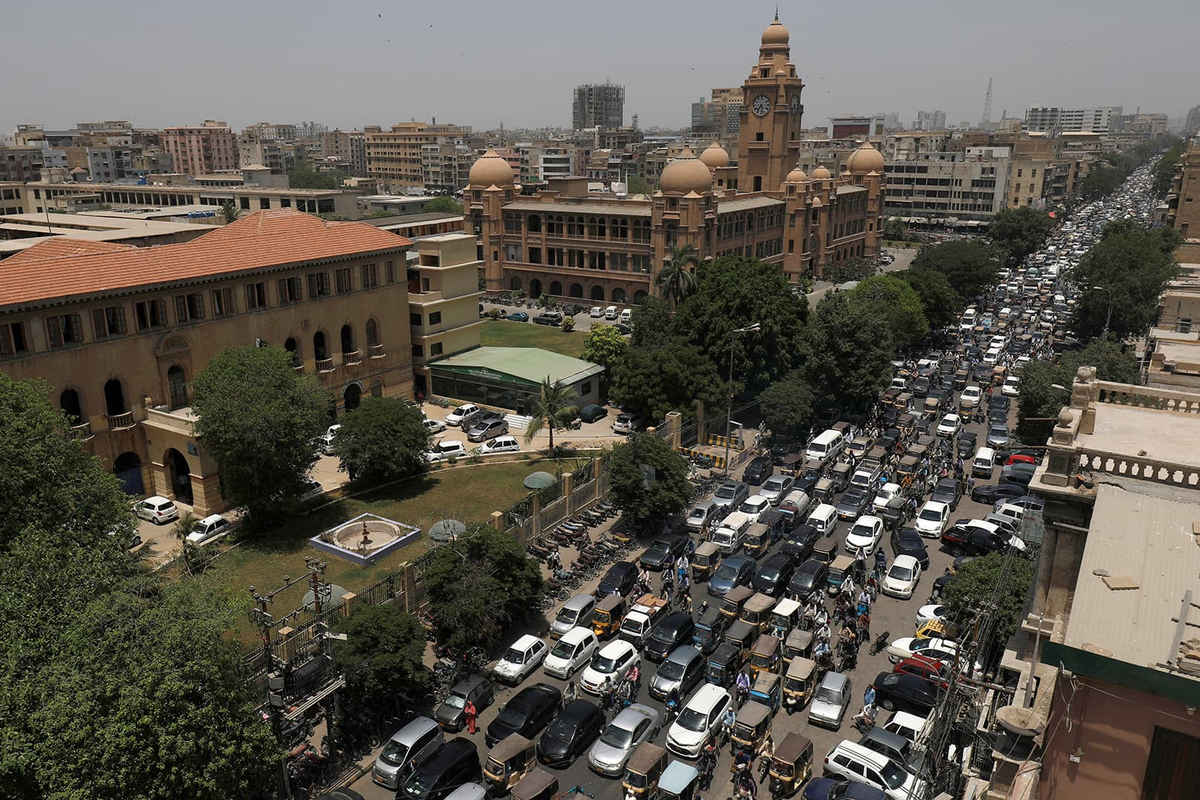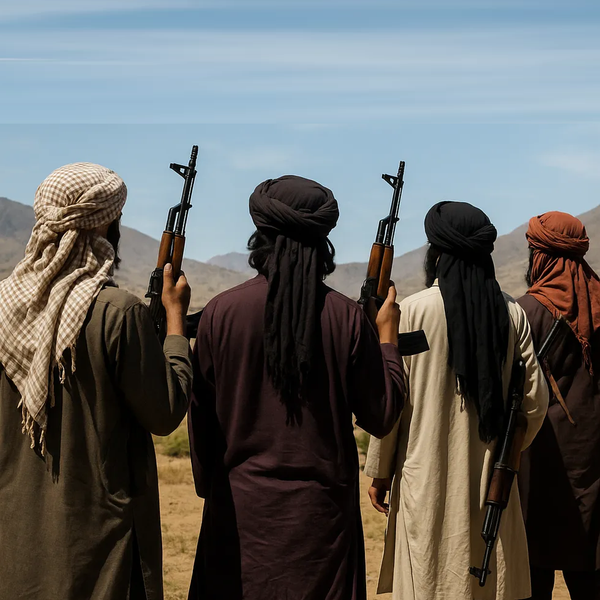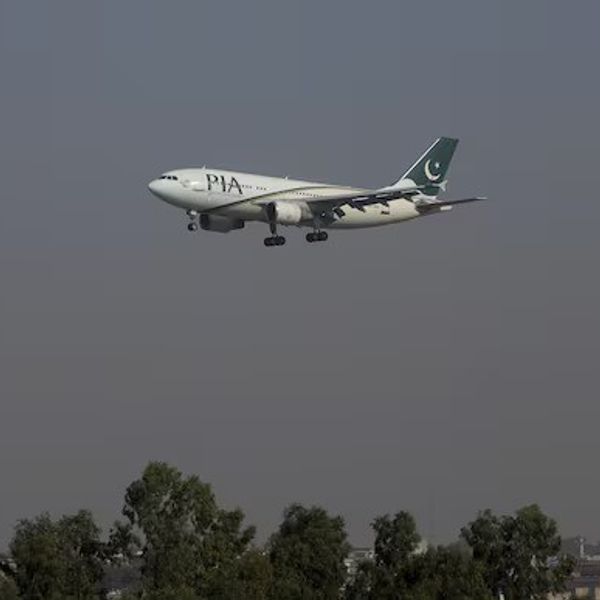World Bank flags Lahore, Karachi as high-risk cities in climate report
Findings highlight how climate change is already exerting unprecedented pressure on Pakistan’s natural and human capital

Shahzad Raza
Correspondent
Shahzad; a journalist with 12+ years of experience, working in Multi Media. Worked in Field, covered Big Legal Constitutional and Political Events in Pakistan since 2012. Graduate of Islamic University Islamabad.

A view of city traffic with the Karachi Metropolitan Corporation (KMC) building in the backdrop.
Reuters
Pakistan’s largest cities, Lahore and Karachi, are among the most climate-vulnerable urban centers in the country, with the potential for devastating human and economic losses, according to the World Bank’s Pakistan Country Climate and Development Report.
The findings highlight how climate change is already exerting unprecedented pressure on Pakistan’s natural and human capital.
Major urban centers at risk
The report identifies Lahore as the most exposed city in Pakistan to river (fluvial) and surface water (pluvial) flooding, with 163 sq. km of its settlement area at risk from river flooding and 129 sq. km from urban flooding. Karachi, Pakistan’s largest city and economic hub, has the second-largest area exposed to pluvial flooding, with vulnerabilities compounded by aging and inadequate infrastructure.
The report also warns that secondary cities are rapidly expanding into high-risk zones, often on cheap but disaster-prone land. These areas are particularly susceptible due to higher poverty levels and large numbers of migrants settling in hazard-prone zones, amplifying exposure to shocks.
Economic devastation from disasters
Climate-related disasters have already caused severe economic and human losses in Pakistan, reversing decades of development gains. Between 1992 and 2021, weather and climate disasters inflicted $29.3 billion in economic losses (adjusted to 2021 USD) — 11.1% of Pakistan’s 2020 GDP.
The catastrophic 2010 floods alone cost 4.5% of 2020 GDP, while preliminary assessments of the 2022 floods suggest comparable, if not greater, destruction. The Post-Disaster Needs Assessment (PDNA) for the 2022 floods estimated over $14.9 billion in damages and $15.2 billion in economic losses, delivering what the report calls “a near knock-out blow” to the country’s fragile economy.
Mounting environmental and human challenges
The report highlights a compounding crisis in northern Pakistan, where glacial melt from rising temperatures, combined with earthquakes, increases the risk of monsoon-driven floods and landslides. Losses from nine recorded landslides between 1900 and 2020 alone were estimated at $18 million, affecting 30,000 people.
Climate change is also worsening air and water pollution, threatening food security, and reducing labor productivity due to extreme heat. In central and eastern Punjab, over 700,000 residents are regularly exposed to severe heatwaves, while in the north, accelerated glacier melt risks catastrophic glacial lake outburst floods (GLOFs).
“The scale of the disaster is unprecedented,” the report states, noting that the 2022 floods surpassed even the 2010 catastrophe. It underscores deep-rooted institutional weaknesses — including poor urban planning, inadequate water management, lack of infrastructure maintenance, and limited disaster risk reduction capacity — as critical barriers to climate resilience.
The cost of climate adaptation
Pakistan faces an enormous financial challenge in adapting to climate change. The country’s Nationally Determined Contribution (NDC) 2021 estimates the total cost of implementation at nearly $200 billion by 2030, including $101 billion for a clean energy transition.
Adaptation for disaster response and recovery is expected to cost $10.7 billion annually, or $85.6 billion between 2022 and 2030, though actual needs may rise sharply without timely action. The 2022 flood PDNA has already demonstrated the staggering financial toll of inadequate preparedness.
The World Bank report highlights that without timely investments in climate adaptation, stronger infrastructure, and institutional reforms, Pakistan’s major cities and overall economy will remain highly vulnerable to increasing climate-related risks.










Comments
See what people are discussing